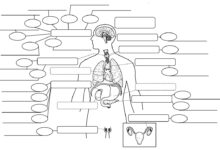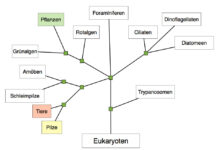System Failure: 7 Shocking Causes and How to Prevent Them
Ever experienced a sudden crash, a blackout, or a digital meltdown? That’s system failure in action—unpredictable, disruptive, and often costly. From power grids to software networks, no system is immune. Let’s dive into what really causes these breakdowns and how we can stop them before they strike.
What Is System Failure? A Clear Definition

At its core, a system failure occurs when a system—whether mechanical, digital, organizational, or biological—ceases to perform its intended function. This can happen gradually or suddenly, affecting anything from a single component to an entire infrastructure network. Understanding system failure begins with recognizing that systems are complex, interdependent, and vulnerable to both internal flaws and external shocks.
The Anatomy of a System
Every system, regardless of type, consists of components, processes, inputs, outputs, and feedback loops. When one part fails, it can trigger a cascade effect. For example, in a computer network, a failing router can disrupt data flow across departments. In healthcare, a miscommunication in patient records can lead to medical errors. The interconnectivity of modern systems amplifies the risk and impact of failure.
- Components: The building blocks (e.g., servers, employees, machines)
- Processes: The workflows that connect components
- Feedback: Mechanisms that allow the system to self-correct or adapt
Types of System Failure
System failure isn’t a one-size-fits-all phenomenon. It manifests in various forms:
Complete Failure: The system stops working entirely (e.g., a power grid blackout).Partial Failure: Some functions remain, but performance is degraded (e.g., a website loading slowly).Latent Failure: A hidden flaw that doesn’t show until triggered (e.g., a software bug activated under specific conditions).Cascading Failure: One failure triggers others in a domino effect (e.g., the 2003 Northeast Blackout)..
“Failures are not random events; they are the result of conditions that develop over time.” — Sidney Dekker, safety expert
7 Major Causes of System Failure
Understanding the root causes of system failure is essential for prevention.While each incident is unique, research shows that most failures stem from a handful of recurring factors.These include design flaws, human error, technological obsolescence, and more.Let’s break down the seven most common causes..
1. Poor System Design
One of the most fundamental causes of system failure is flawed design. This includes inadequate planning, lack of redundancy, and failure to anticipate real-world usage. For example, the FEMA report on Hurricane Katrina highlighted how levee designs in New Orleans were insufficient for extreme weather, leading to catastrophic flooding.
Design flaws often go unnoticed until stress is applied. In software, this might mean a database that crashes under high traffic. In transportation, it could be a bridge that collapses under unexpected load. The key issue is that poor design doesn’t account for edge cases or failure modes.
2. Human Error and Organizational Culture
Humans are integral to most systems, and human error remains a leading cause of system failure. According to a study by the National Institutes of Health, up to 70% of industrial accidents are linked to human factors.
But it’s not just about individual mistakes. Organizational culture plays a critical role. In environments where employees fear reporting errors, small issues go unaddressed and grow into major failures. The 1986 Challenger disaster is a tragic example—engineers had warned about O-ring failures in cold weather, but their concerns were ignored due to pressure to launch.
3. Technological Obsolescence
Outdated technology is a ticking time bomb. Legacy systems—especially in government, healthcare, and finance—are often kept running long past their intended lifespan. These systems lack modern security, compatibility, and support.
For instance, in 2019, the UK’s National Health Service (NHS) faced criticism for still using Windows 7 after Microsoft ended support. This made systems vulnerable to cyberattacks like WannaCry, which caused widespread disruption. BBC News reported that over 80 NHS trusts were affected, delaying treatments and surgeries.
4. Cybersecurity Breaches
In the digital age, system failure often stems from cyberattacks. Malware, ransomware, and phishing can cripple networks, steal data, and bring operations to a halt. The 2021 Colonial Pipeline attack is a prime example: a single compromised password led to a ransomware attack that shut down fuel distribution across the U.S. East Coast.
Cybersecurity isn’t just about firewalls; it’s about system architecture, access control, and employee training. When any of these fail, the entire system becomes vulnerable. CISA’s advisory on the Colonial Pipeline incident emphasized the need for zero-trust models and multi-factor authentication.
5. Natural Disasters and Environmental Stress
External forces like earthquakes, floods, and storms can overwhelm even well-designed systems. In 2011, the Fukushima Daiichi nuclear disaster was triggered by a tsunami that exceeded the plant’s design specifications. Backup generators were flooded, leading to a loss of cooling and subsequent meltdowns.
Climate change is increasing the frequency and intensity of such events, making resilience planning more critical than ever. Systems must be designed with environmental risks in mind, including flood zones, seismic activity, and extreme temperatures.
6. Overload and Resource Depletion
Systems have limits. When demand exceeds capacity, failure is inevitable. This is common in IT (server crashes during traffic spikes), transportation (gridlock), and energy (blackouts during heatwaves).
The 2003 Northeast Blackout, which affected 55 million people, began when overloaded transmission lines sagged into trees due to high demand and inadequate monitoring. A software bug in the alarm system prevented operators from responding in time. The official report cited poor situational awareness and lack of coordination as key factors.
7. Lack of Maintenance and Monitoring
Even the best-designed systems degrade over time. Without regular maintenance, small issues become major failures. The 2018 collapse of the Morandi Bridge in Genoa, Italy, killed 43 people and was attributed to corrosion and insufficient inspections.
Monitoring is equally important. Predictive analytics, sensor networks, and automated alerts can detect anomalies before they escalate. In aviation, for example, real-time engine monitoring prevents in-flight failures. Ignoring maintenance is not just negligence—it’s a systemic risk.
Case Studies: Real-World System Failures
Theory is important, but real-world examples bring the concept of system failure to life. These case studies illustrate how multiple factors—design, human error, technology, and environment—can converge to create disaster.
Case Study 1: The 2003 Northeast Blackout
On August 14, 2003, a massive power outage swept across the northeastern U.S. and parts of Canada. It began in Ohio when a software bug in FirstEnergy’s control room alarm system failed to alert operators to overloaded power lines. Meanwhile, trees had grown too close to transmission lines, causing them to short circuit under high load.
The failure cascaded across the grid due to lack of real-time data sharing between utilities. Within minutes, 265 power plants shut down. The blackout lasted up to two days in some areas, costing an estimated $6 billion.
Key lessons:
- Need for robust monitoring systems
- Importance of vegetation management near power lines
- Criticality of inter-utility communication protocols
Case Study 2: The Boeing 737 MAX Crashes
The 2018 Lion Air and 2019 Ethiopian Airlines crashes, which killed 346 people, were linked to the Maneuvering Characteristics Augmentation System (MCAS). This automated system relied on a single sensor to detect stall conditions. When the sensor failed, MCAS repeatedly forced the nose down, overriding pilot inputs.
Investigations revealed deeper issues: inadequate pilot training, lack of transparency from Boeing, and regulatory oversight failures. The system failure was not just technical—it was organizational and cultural.
After grounding the fleet for nearly two years, Boeing redesigned MCAS to use multiple sensors and improved pilot training. The incident highlighted the dangers of over-reliance on automation without proper safeguards.
Case Study 3: The Knight Capital Trading Glitch
In 2012, Knight Capital, a major Wall Street trading firm, lost $440 million in just 45 minutes due to a software deployment error. A new algorithm was accidentally activated in production, causing the firm to buy and sell stocks at massive volumes and incorrect prices.
The root cause? A forgotten piece of legacy code that was reactivated during an update. The system lacked proper testing and rollback procedures. This incident led to Knight’s eventual acquisition and sparked reforms in financial technology risk management.
“One line of bad code can cost hundreds of millions.” — Financial Times analysis of the Knight Capital incident
How System Failure Impacts Different Industries
System failure doesn’t discriminate—it affects every sector, but the consequences vary widely. Let’s explore how different industries experience and respond to system breakdowns.
Healthcare: When Lives Are on the Line
In healthcare, system failure can be fatal. Electronic health record (EHR) outages, miscommunication between departments, or equipment malfunctions can delay treatment or cause errors. During the 2020 pandemic, many hospitals faced system failures due to overwhelmed IT infrastructure and staffing shortages.
A 2021 report by the Office of the National Coordinator for Health IT found that 30% of hospitals experienced EHR downtime weekly, averaging 4 hours per incident. Backup systems and disaster recovery plans are essential in this high-stakes environment.
Finance: The Cost of Downtime
Financial institutions rely on real-time transaction processing. A system failure can halt trading, freeze accounts, or enable fraud. In 2012, the Royal Bank of Scotland (RBS) suffered a software update failure that blocked millions of customers from accessing their accounts for days.
The UK’s Financial Conduct Authority fined RBS £42 million for the incident, citing poor change management and lack of testing. The bank’s reputation suffered long-term damage. Today, financial firms invest heavily in redundancy, failover systems, and stress testing to prevent such failures.
Transportation: From Traffic Jams to Crashes
Modern transportation systems—air, rail, road, and sea—depend on complex networks of sensors, software, and human operators. A failure in any component can cause delays, accidents, or fatalities.
In 2019, London’s Gatwick Airport was paralyzed for 36 hours due to drone sightings, exposing gaps in security and response protocols. While not a technical system failure per se, it revealed how external threats can exploit system vulnerabilities.
Autonomous vehicles introduce new risks. In 2018, an Uber self-driving car struck and killed a pedestrian in Arizona. The system failed to recognize the person crossing the road, and the safety driver was distracted. This tragic incident underscored the need for better AI training and human oversight.
The Role of Redundancy in Preventing System Failure
Redundancy is one of the most effective strategies for preventing system failure. It means having backup components, systems, or processes that can take over if the primary one fails. Think of it as an insurance policy for your infrastructure.
Types of Redundancy
There are several forms of redundancy, each suited to different contexts:
- Hardware Redundancy: Extra servers, power supplies, or network links (e.g., RAID arrays in data storage).
- Software Redundancy: Duplicate processes or error-correcting code (e.g., blockchain consensus mechanisms).
- Procedural Redundancy: Multiple verification steps (e.g., pilot checklists in aviation).
- Geographic Redundancy: Data centers in different locations to survive regional disasters.
Real-World Examples of Redundancy Success
The International Space Station (ISS) is a masterpiece of redundancy. It has multiple power sources, life support systems, and communication channels. When a cooling pump failed in 2010, astronauts were able to switch to backups and perform repairs without endangering the crew.
Similarly, cloud providers like AWS and Google Cloud use geographic redundancy to ensure uptime. During Hurricane Sandy in 2012, AWS’s East Coast data centers remained operational because traffic was rerouted to Midwest and West Coast facilities.
However, redundancy isn’t foolproof. It can create complexity and false confidence. The 2011 Fukushima plant had backup generators, but they were placed in a flood-prone area—rendering them useless when the tsunami hit. Redundancy must be thoughtfully designed, not just added as an afterthought.
How to Detect Early Warning Signs of System Failure
Many system failures are preceded by warning signs—subtle anomalies that, if caught early, can prevent disaster. The challenge is recognizing them before it’s too late.
Monitoring and Alert Systems
Modern systems generate vast amounts of data. Real-time monitoring tools can detect deviations from normal behavior. For example, in IT, tools like Nagios or Datadog track server performance, network traffic, and application health.
In manufacturing, predictive maintenance systems use vibration sensors and thermal imaging to identify failing machinery. A slight increase in temperature or vibration can signal an impending breakdown, allowing for proactive repairs.
Human Observations and Reporting Culture
Technology isn’t the only source of early warnings. Frontline workers often notice small issues first—unusual noises, delays, or errors. But they need a safe environment to report them.
Aviation has one of the best reporting cultures. The Aviation Safety Reporting System (ASRS), managed by NASA, allows pilots and crew to submit anonymous reports of near-misses or hazards. These reports are analyzed to improve safety protocols without fear of punishment.
Organizations should encourage a “just culture”—where mistakes are treated as learning opportunities, not grounds for blame. This fosters transparency and early intervention.
Data Analytics and Predictive Modeling
Advanced analytics can identify patterns that humans might miss. Machine learning models can predict equipment failure, network congestion, or even employee burnout—all risk factors for system failure.
For example, General Electric uses AI to predict turbine failures in power plants. By analyzing historical performance data, the system can forecast when maintenance is needed, reducing unplanned downtime by up to 30%.
“The best way to predict the future is to create it.” — Peter Drucker, but in the context of system failure, it’s about predicting failure to prevent it.
Strategies to Prevent System Failure
Prevention is always better than recovery. While no system can be 100% failure-proof, a proactive approach can drastically reduce risk. Here are proven strategies to build more resilient systems.
Implement Robust Testing and Simulation
Before deployment, systems should undergo rigorous testing. This includes stress testing, failure mode analysis, and simulation of real-world scenarios. NASA’s “test as you fly” philosophy ensures that every component is tested under conditions that mimic actual operation.
In software development, practices like continuous integration and automated testing catch bugs early. Chaos engineering, popularized by companies like Netflix, involves deliberately introducing failures to test system resilience.
Adopt a Systems Thinking Approach
Traditional problem-solving focuses on fixing symptoms. Systems thinking looks at the whole picture—how components interact, how feedback loops work, and how changes in one area affect others.
For example, instead of blaming a nurse for a medication error, systems thinking examines the workflow, training, labeling, and communication channels that contributed to the mistake. This leads to more effective, long-term solutions.
Invest in Continuous Training and Drills
Human performance is a critical factor. Regular training ensures that staff know how to respond to failures. Emergency drills, like fire evacuations or cyberattack simulations, build muscle memory and coordination.
The nuclear industry conducts regular emergency exercises to prepare for worst-case scenarios. After the Three Mile Island incident in 1979, training programs were overhauled to emphasize decision-making under stress.
Establish Clear Accountability and Oversight
When no one is clearly responsible, failures slip through the cracks. Clear governance structures, with defined roles and reporting lines, ensure that issues are addressed promptly.
Regulatory bodies like the FAA, FDA, and NERC provide external oversight, but internal audits and compliance checks are equally important. Independent review boards can offer unbiased assessments of system health.
Recovering from System Failure: Steps to Take
Even with the best precautions, failures happen. The key is how quickly and effectively you respond. Recovery isn’t just about fixing the immediate problem—it’s about restoring trust, learning from the incident, and preventing recurrence.
Immediate Response and Containment
The first step is to contain the damage. In IT, this might mean isolating infected systems. In healthcare, it could involve switching to manual processes during an EHR outage. Speed is critical to minimize impact.
Incident response teams should be trained and ready. A clear chain of command ensures that decisions are made quickly and communicated effectively.
Root Cause Analysis
Once the crisis is contained, a thorough investigation must follow. Techniques like the “5 Whys” or Fishbone diagrams help identify the underlying cause, not just the symptoms.
For example, if a server crashes, asking “Why?” repeatedly might lead from “high CPU usage” to “inefficient code” to “lack of code review process.” Addressing the root cause prevents future failures.
Communication and Transparency
Stakeholders—customers, employees, regulators—need timely, accurate information. Hiding or downplaying a failure only worsens reputational damage.
After the 2017 Equifax data breach, the company was criticized for delayed disclosure and confusing messaging. In contrast, when Slack experienced an outage in 2020, they provided real-time updates on their status page, maintaining user trust.
Post-Mortem and Continuous Improvement
A post-mortem analysis should document what happened, why it happened, and what will be done differently. This isn’t about assigning blame—it’s about learning.
Companies like Etsy and Google publish public post-mortems to share lessons with the broader community. This culture of transparency builds credibility and drives industry-wide improvement.
What is system failure?
System failure occurs when a system—technical, organizational, or biological—stops performing its intended function. This can result from design flaws, human error, cyberattacks, or external events like natural disasters.
What are the most common causes of system failure?
The top causes include poor design, human error, outdated technology, cybersecurity breaches, natural disasters, system overload, and lack of maintenance. Often, multiple factors combine to trigger a failure.
How can organizations prevent system failure?
Prevention strategies include robust testing, redundancy, real-time monitoring, employee training, systems thinking, and a culture of transparency. Investing in resilience reduces both the likelihood and impact of failures.
What should you do after a system failure?
Respond immediately to contain damage, conduct a root cause analysis, communicate transparently with stakeholders, and perform a post-mortem to implement corrective actions and prevent recurrence.
Can system failure be completely avoided?
No system is 100% failure-proof. However, with proper design, monitoring, and culture, the risk and impact of system failure can be minimized significantly.
System failure is an inevitable risk in any complex environment. Whether it’s a power grid, a software platform, or a healthcare network, the potential for breakdown exists. But as we’ve seen, most failures are not random—they are the result of identifiable causes like poor design, human error, or lack of maintenance. The good news is that with the right strategies—redundancy, monitoring, training, and a culture of learning—we can build systems that are not only robust but resilient. The goal isn’t to achieve perfection, but to prepare for imperfection. By understanding system failure, we take the first step toward preventing it.
Further Reading:









